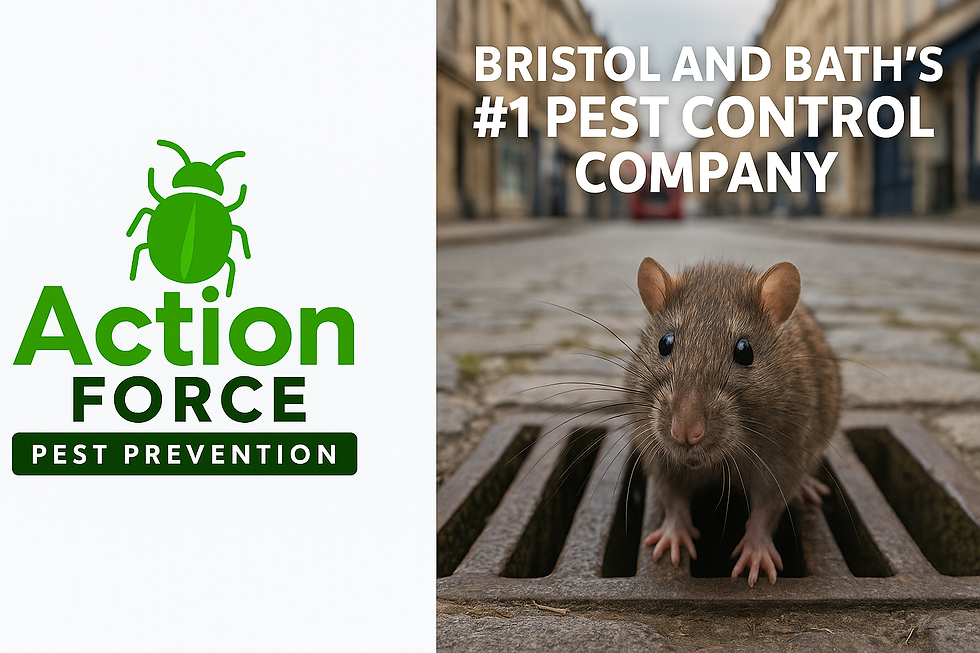Uninvited Guests, How Rats Enter Homes via Sewers
- Action Force

- Dec 17, 2024
- 2 min read
The Underground Journey:
Tucked beneath the quaint neighbourhoods and vibrant cities is an unglamorous world of tunnels and pipes: the sewer system. It may do an efficient job of pulling waste away from our homes, but it also creates a pathway for one of nature’s most opportunistic residents,, RATS. Understanding how these creatures journey from the depths of English sewers into our homes is essential to addressing and mitigating the threat they pose.

A Map of the Sewer System from a Rat's Perspective
Rats are phenomenal survivors, easily adaptable to environments that protect them from predators while granting easy access to food and water. Our sprawling sewersystem, parts of which date back to the Victorian era, provides an almost ideal habitat with its darkness, moisture, and warmth.
Once inside the sewer system, typically accessed through breaches in sewer lines or municipal connections. Rats navigate these corridors, attracted by food scraps and organic waste that find their way into drains. As they traverse the labyrinth of tunnels, they exploit weaknesses such as cracked pipes or open drainage connections leading to properties.
Rodent Entrance Into Homes: The Rat Express
In older English homes, where plumbing may not meet modern standards, the risk of rodent intrusions is significantly higher. Defects in domestic drainage systems, such as pipe ruptures or uncovered drains, can provide entry points for these expert swimmers and climbers.
Rats are proficient swimmers and can easily access a home’s internal plumbing network. They swim up pipes to find entry points, such as drains or toilets, emerging in unexpected places. While encountering a rat in this way is rare, it underscores the importance of effective prevention measures.
Extent of Sewer-Based Infestation in England
In urban areas across England, it is believed that sewer access accounts for a substantial proportion of rodent infestations. Studies estimate that as much as 75% of urban rat problems stem from sewer routes. This issue is particularly prevalent in densely populated areas where older infrastructure and the close proximity of homes allow these pests to move easily from one property to another.
Preventative Measures to Keep English Homes Safe
Homeowners can take several steps to protect their homes against rats entering via the sewer system. Routine inspection and maintenance of plumbing and drainagesystems should be a top priority. Ensuring that all drains are securely covered and considering the installation of rat-proof valves in vulnerable pipes are essential steps. Regular checks for structural weaknesses, especially in basements and ground-floor drain openings, can also help.
For those in areas with known rat activity, hiring professional pest control services to inspect and provide recommendations can offer peace of mind and bolster a home’s defences against potential invasions.

Conclusion: Staying Ever Vigilant
Understanding how rats travel from sewers to our homes enables us to prepare and take measures to protect our living spaces. Awareness and proactive home maintenance are key in countering these stealthy underground invaders. With vigilance and care, homeowners can secure their properties, minimising the risks and impacts of rat incursions from below.




Comments